Photos
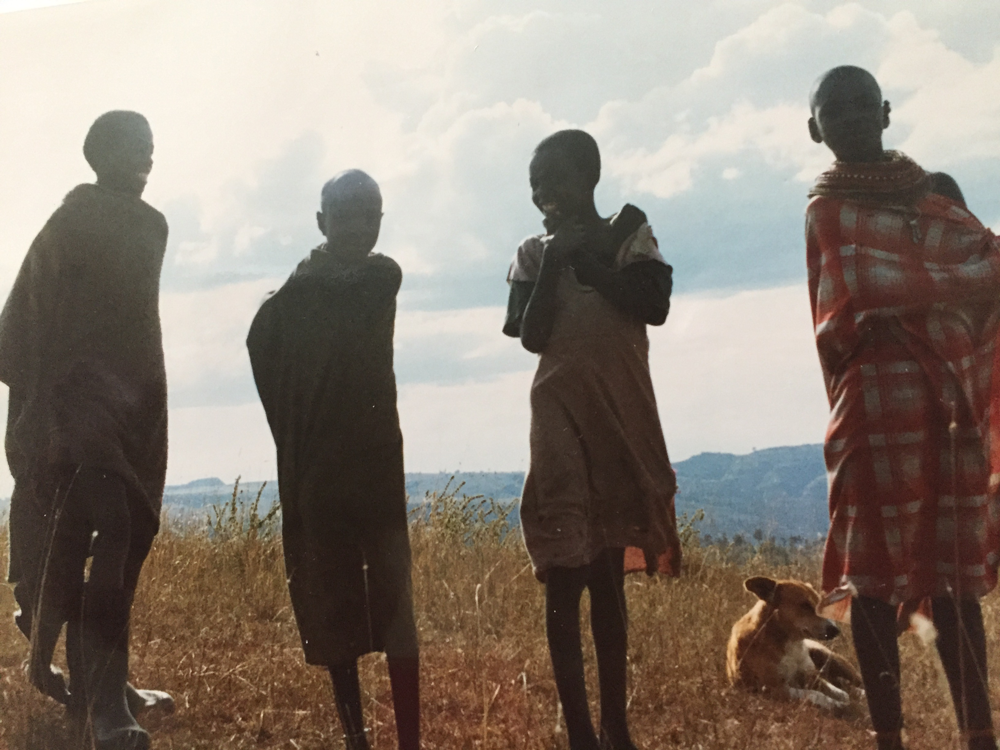
Young Samburu children. The young boy on the right wears a very smart red and white “cape.” I found the Samburu to be entirely fashionable wearing snoods as well as sprigs of green leaves in their hair atop their foreheads.
While the boys wear their traditional capes, the happy girl between them is wearing a western dress. These are flooding into the country as used clothing from abroad replacing Kenya’s own textile industry.
The dog between them was vaguely called a shenzi, nearly a breed of their own. Most were bigger than this one. The shenzi was probably a throwback to the Ridgeback brought into Kenya often acting as guard dogs on the large up-country wheat and cattle farms along with Dobermans and Rottweilers who later turned up as dogs that were a smaller size and tagged Malindi dogs, having dark brown and apricot markings. Why they were called this — Malindi being down at the coast — is a mystery to me.
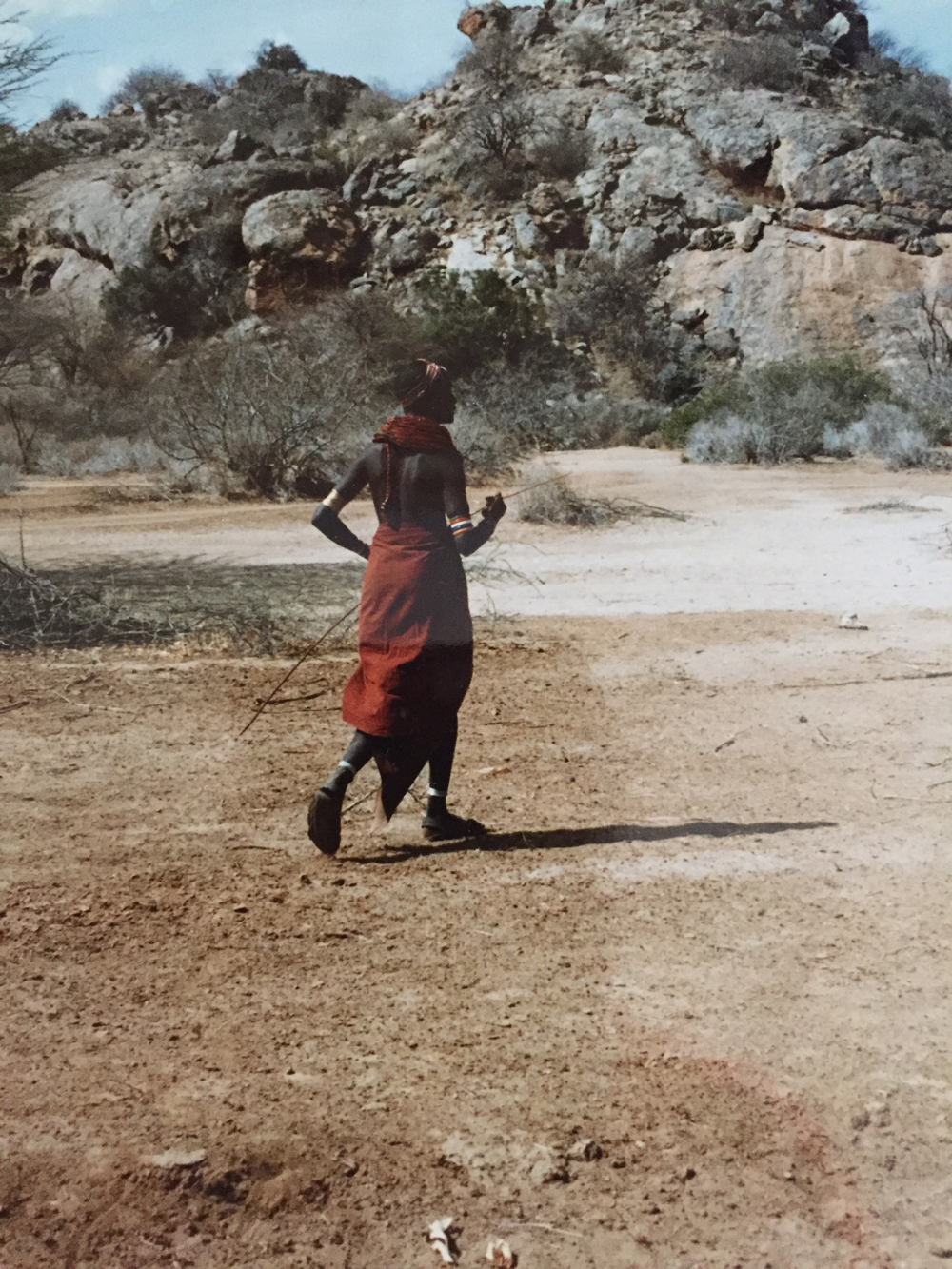
Samburu Country. While we were traveling in Samburu Country, we were happy to give this young lady — who would have thought nothing of walking miles and miles in the searing heat and trackless desert — a ride.
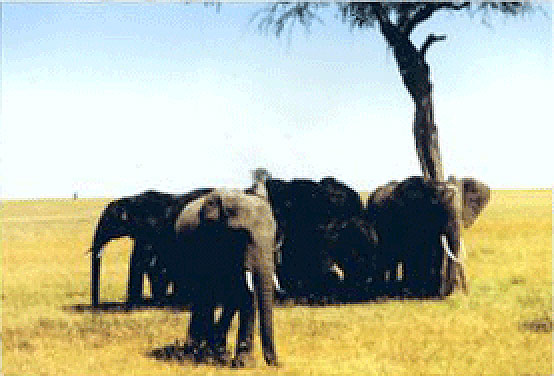
Taken with my Minolta with a zoom lens. This is one of the first pictures I took in Kenya. The alpha female is protecting her band of old, young and almost new born and is not hesitating to scare us off. This one tree is enough shade for the whole bunch…..just.
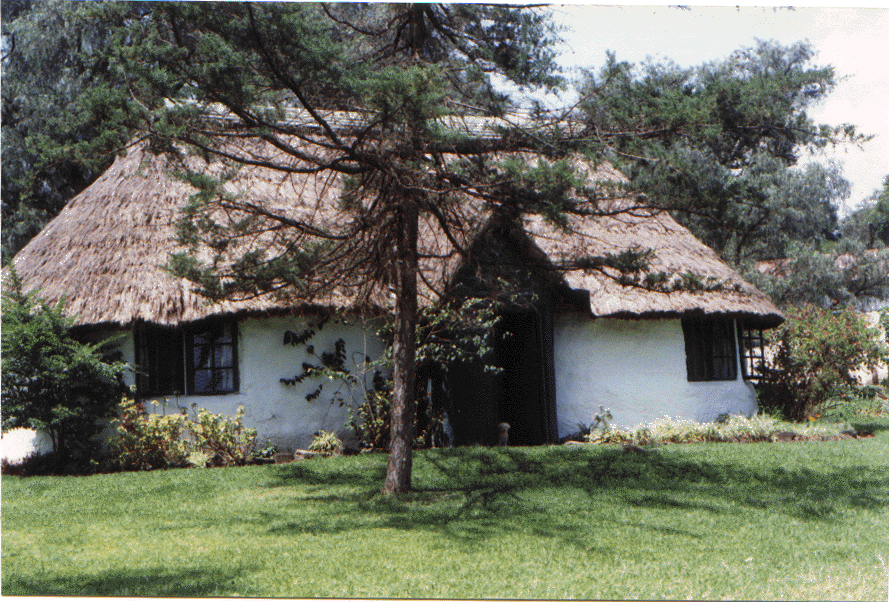
My house in Nakuru. When I lived here from 1988 to 1993, it was over 40 years old. Made of mud and wattle, two large rondovals were connected in the middle with a hallway leading to smaller rondovals in the rear for the bathroom and loo. The whole was covered in thatch. The kitchen was nothing more than an added square room with only a sink. But I couldn’t complain–the sink had running water, an unheard of luxury. That’s Rose, my little Bichon Frise, in the doorway. She was an intrepid traveler.
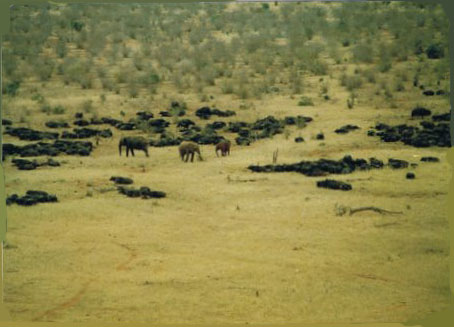
Elephants and buffalo at Tsavo, 1987. There were still large herds on the move then. I don’t know if that is true now.
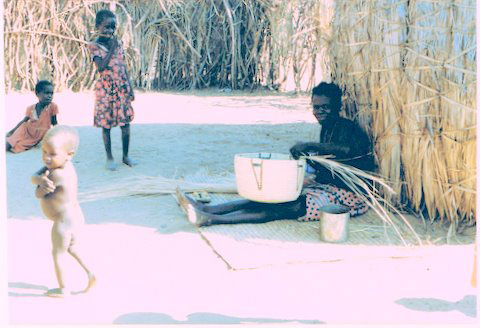
Turkana women making baskets. The Turkana baskets are among the most beautiful in the world. They are quite large, sturdy and are sold all the way from Nairobi along the main road. Turkana is in a remote area of Kenya to the north and the people are very tall, lithe and dark. Standing in the shade of an Acacia tree they are almost invisible because they also wear the dark skins of goats and cattle. Their hair is braided in a distinctive style and the women wear strings of beads from their chins to their breast bones making for long, graceful necks and beautiful posture.
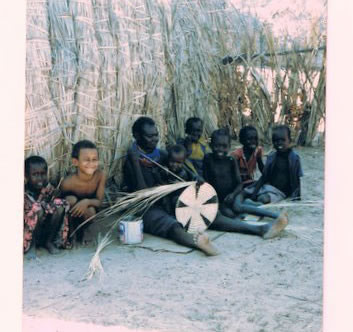
These women and children are sitting outside an aui which is a grass hut where they live, cook, and dry their goat meat. Slautering cattle for food is only for special occasions such as weddings way out in the bush one of which I attended and will never forget. Guests and older, revered family members are served the best cuts of meat but still, I couldn’t chew it. Which brings me to say that the Africans have the most beautiful, strong and white teeth I have ever seen. They are able to (and do) open soda bottles with them.
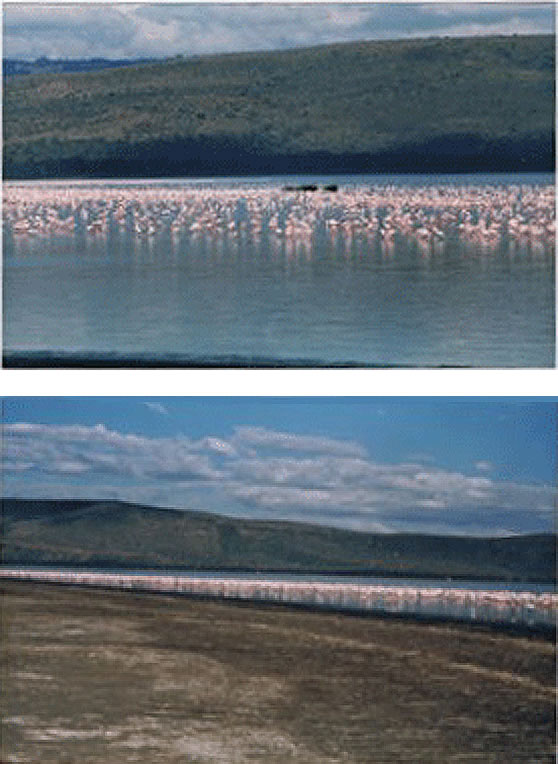
This picture and the next, show flamingos on Lake Nakuru not far from where I lived in Kenya. The “shore” was like sifting sand….all mud, so it was difficult to get too near. You almost had to shout over the noise of the flamingos. They ate and mated and raised their families on the shores of the many lakes that dotted the rift valley. Taken with a disposable camera as usual.
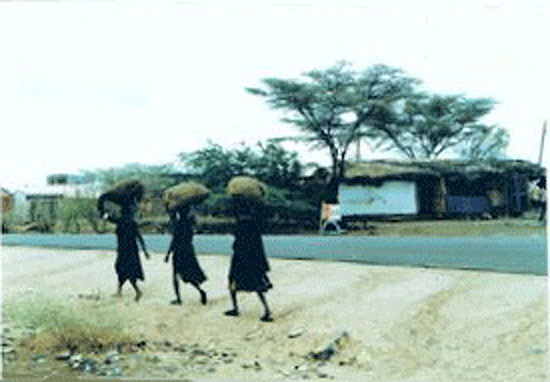
African women have the most beautiful postures and backs from carrying large loads on their heads since a young age. These women are carrying charcoal for cooking which might be 15 to 20 pounds but they also carry 40 pound debe cans for miles full of water. I have seen them carrying lighter loads and knitting at the same time.
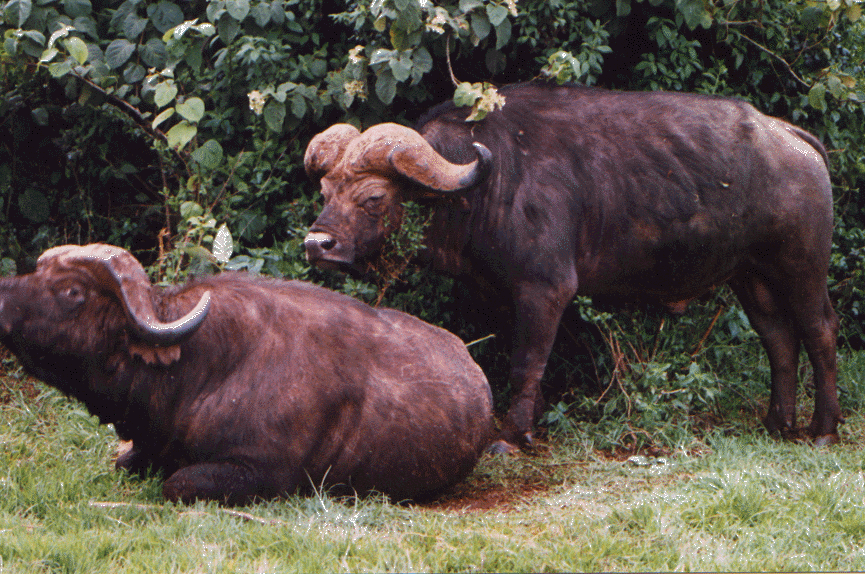
One of the five most valued for trophy hunting, the waterbuffalo is a ferocious beast. Traveling in small groups which are made up of females and juveniles, it is dominated by one large and seasoned male. This picture was taken in the Lake Nakuru Wild Life Refuge Park which surrounds Lake Nakuru. We used to go to the Park like one would go to the zoo. The only difference was we didn’t get out of our cars for environmental protection if not for our own safety. We could get out and stretch at the water falls which was a favorite picnic ground.
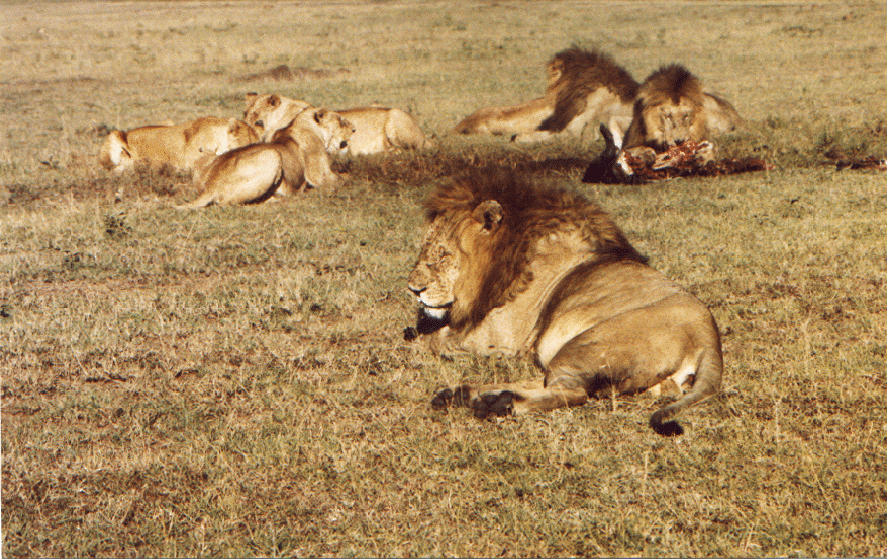
Here we are in the Maasai Mara, the northernmost extension of the Serengeti. These lions had just finished an entire wildebeast. The wildebeast is an enormous animal and it no doubt took several of the females to bring it down.
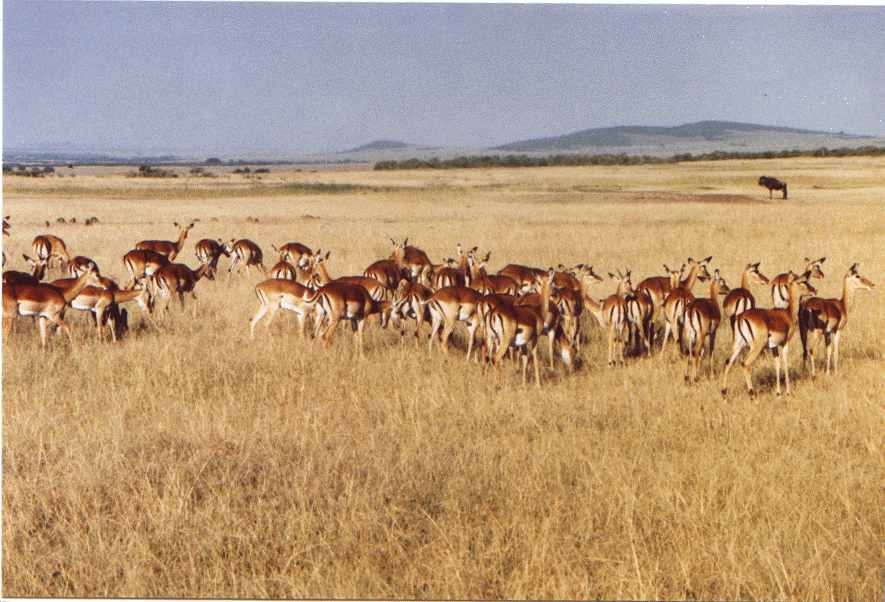
Just above the heads of these gazelles, you might see the heads of the resting lions. Satiated with the wildebeast, the lions are not, for the moment, a threat to the gazelles. These large packs of females are led by a single male gazelle. A cluster of males always stays nearby.
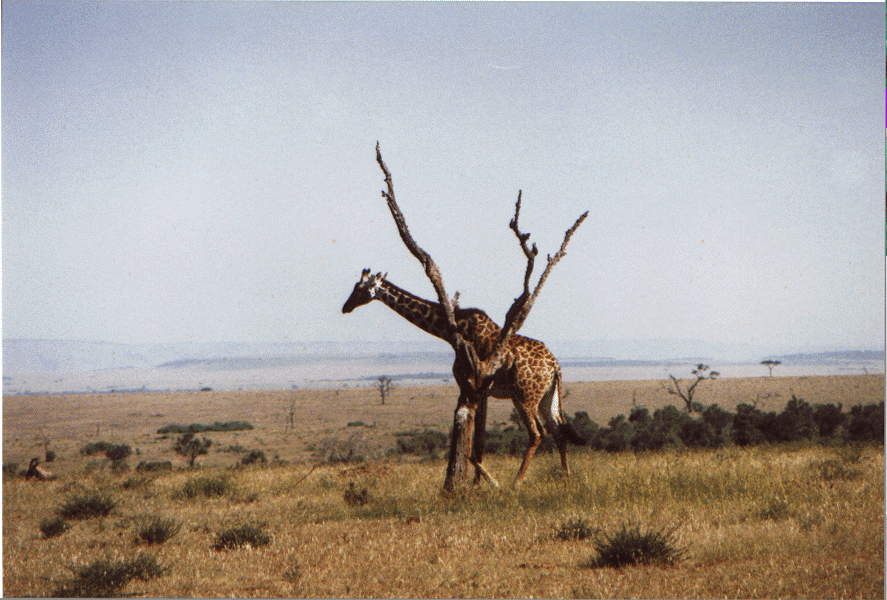
This lone tree, no doubt shredded of all its leaves by elephants, is a perfect itching post for this giraffe. Although the giraffe is visible now, you can be almost under their feet at times before you see them–particularly if they are in a stand of trees.
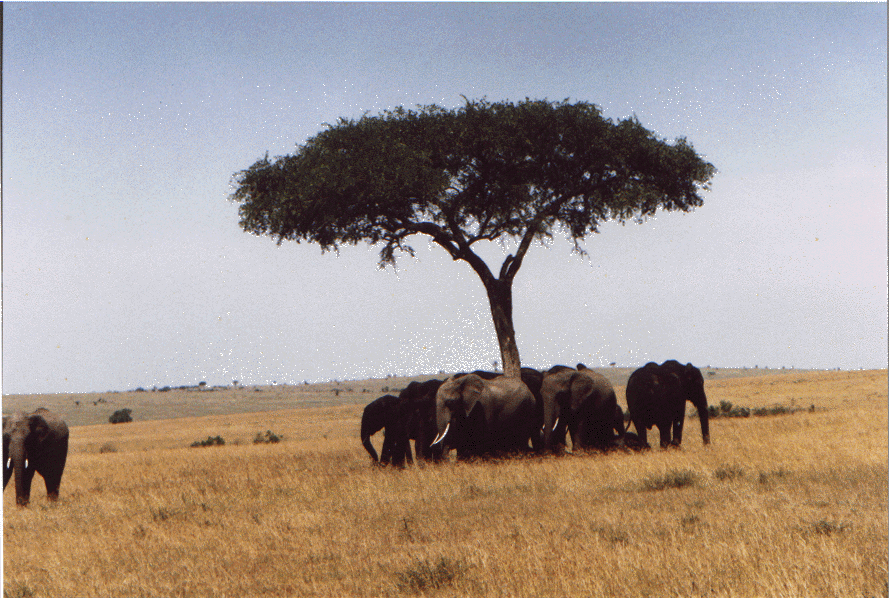
Clustered under the only tree around like a group of pioneer wagons, this small herd of elephants is dominated by a great aunt who has detached herself from the shade and group to see what we were all about. Several females have also come forward in front. So we will leave.
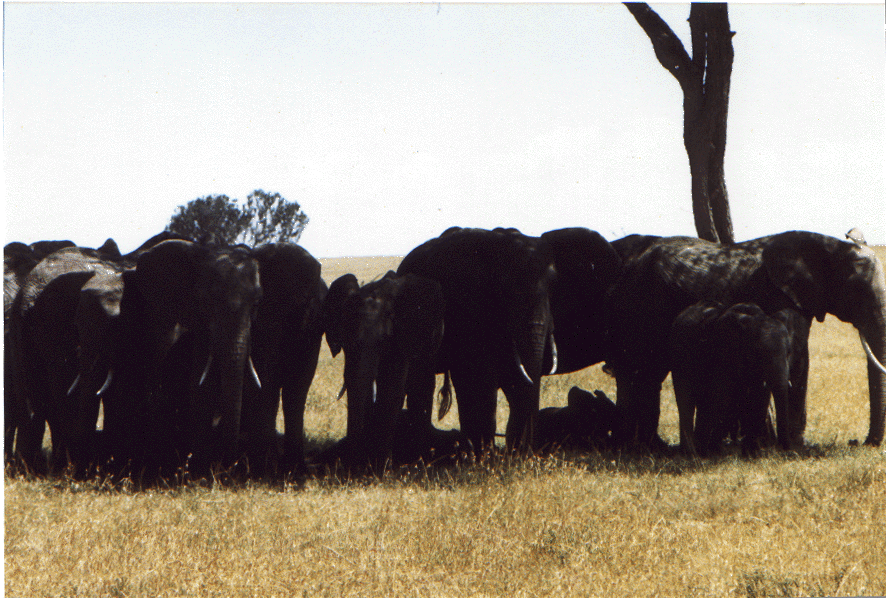
Elephant herds are led and protected by one large female. However, they can all get in the act if aroused particularly when protecting their babies. You can see the outlines of the baby they are protecting lying peacefully on the ground, unaware of the drama of the moment.
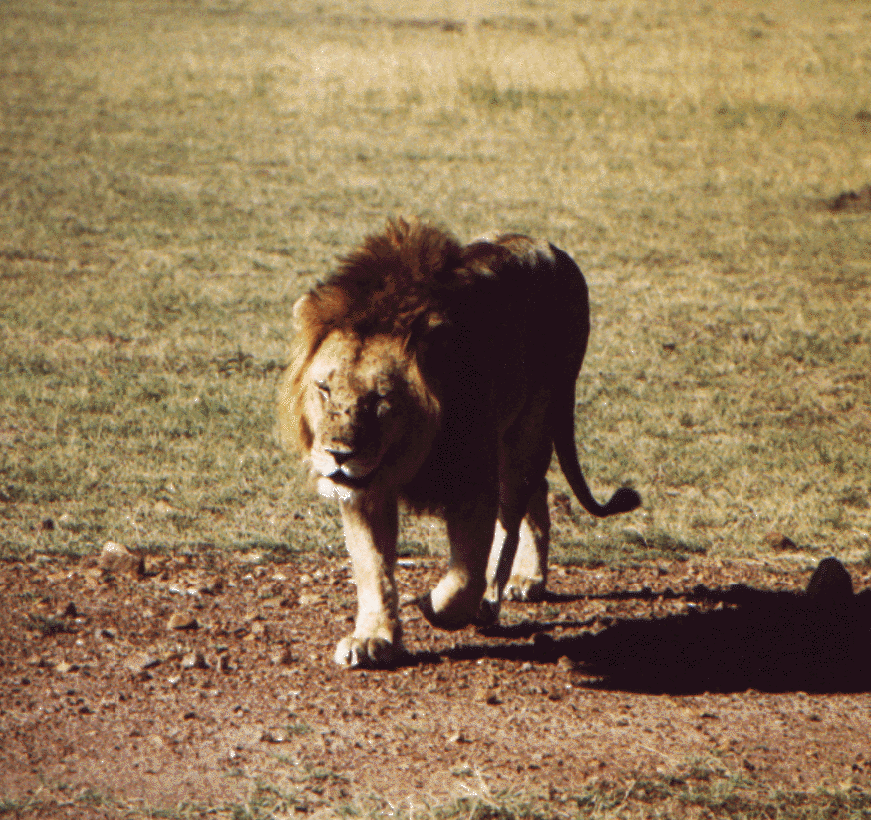
Confident on a full stomach, this lion lopes right towards us on his way to a stand of bushes where he will be joined by several females in its scant shade. Watching them lying around and snoozing, it is difficult to think of the drama that had just taken place in the very early hours of dawn.
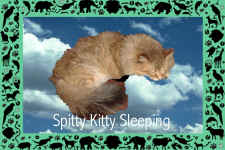
Spitty Kitty was born in Kenya in 1990, found by Ann on the streets of Nakuru when only 5 weeks old in front of a butcher’s shop, near death. Given not much of a chance, she lived until the ripe old age of 16, lovingly cared for by Ann and Spitty’s adoptive mom and best friend Ann’s Bichon Frise, Rose, who herself loved Kenya and traveled extensively with Ann while on safari. Spitty died in February 2006, a seasoned traveler in the tradition of all those who love adventure.
We’ll be adding or changing pictures periodically to keep things interesting. So keep coming back to hear more about Design Africa, and see more about life in Kenya!


